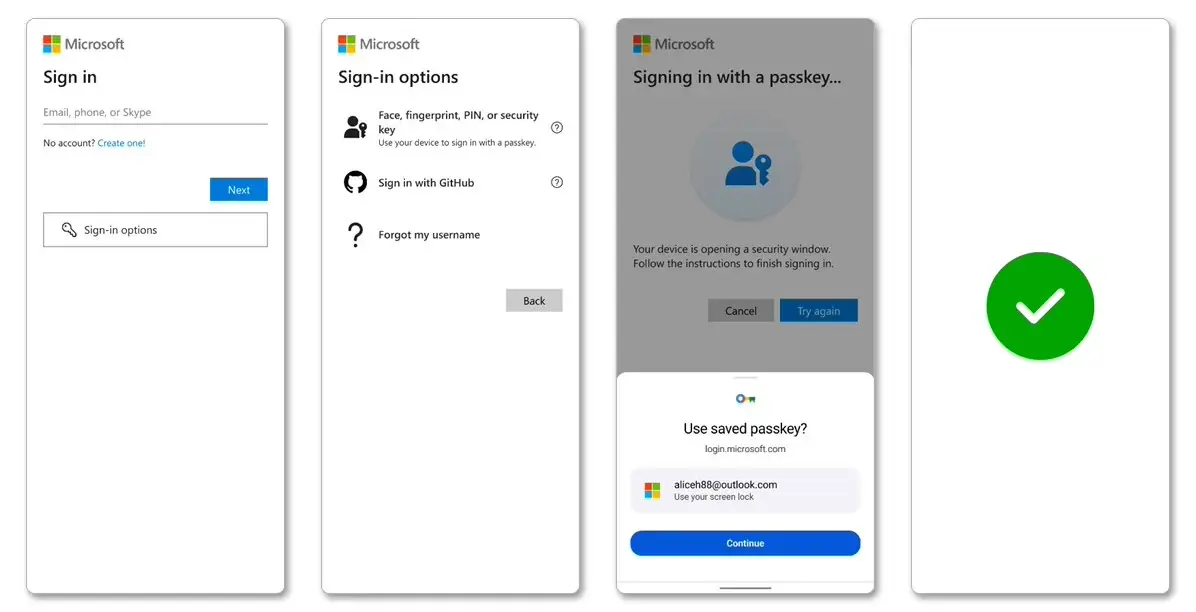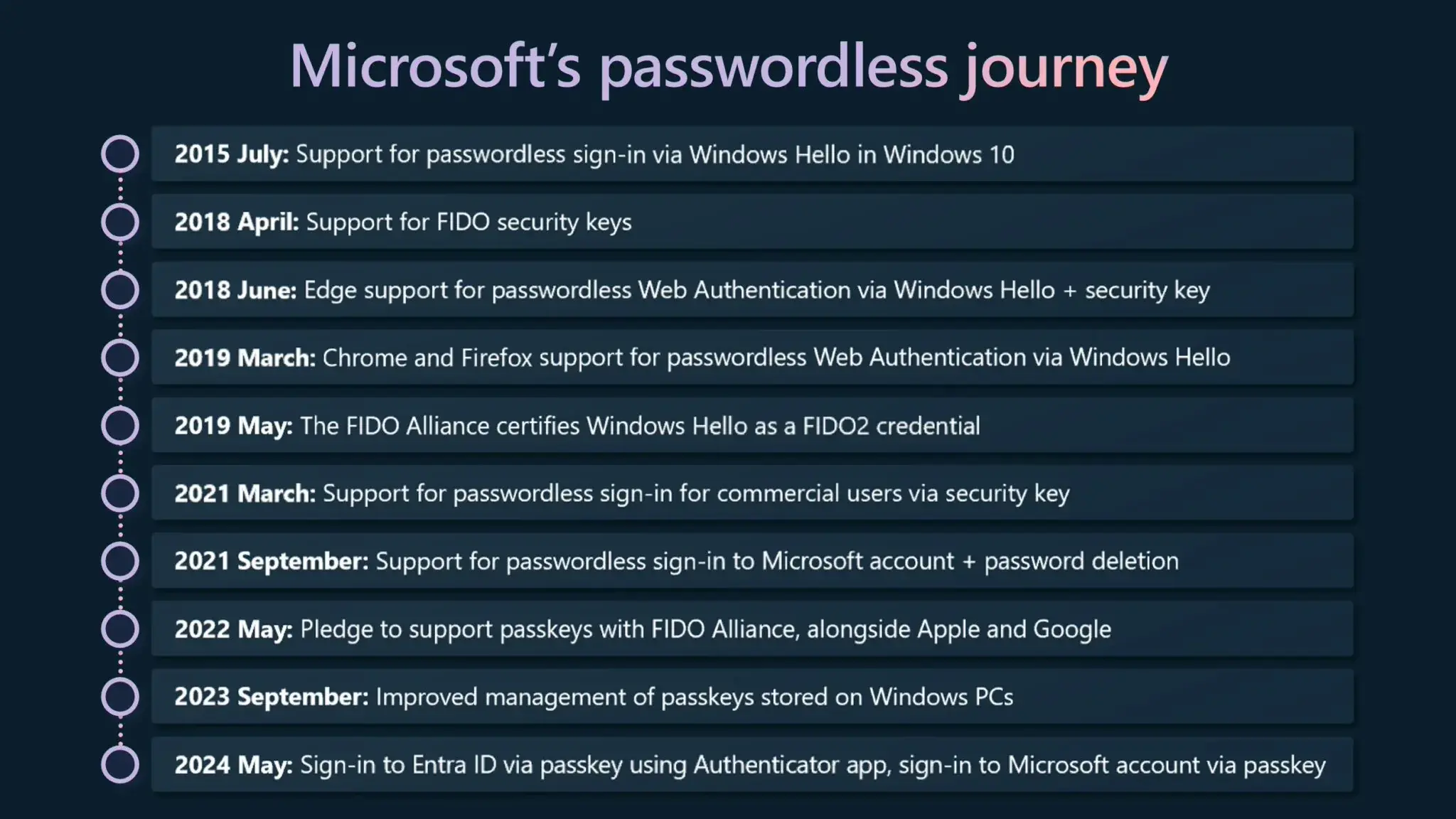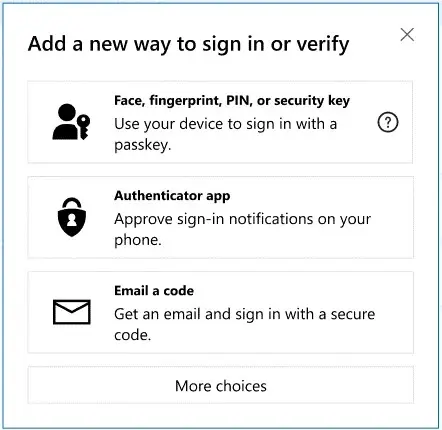Microsoft has announced a significant shift in its authentication strategy, introducing passkey support for its consumer user accounts. Starting today, users can use Passkey to log in to Microsoft-owned applications and websites. The journey to the current passkey dates back to 2015 when Microsoft launched Windows Hello authentication in Windows 10. Since then, the company has been doing all it can to make login much easier for users. Microsoft has since evolved to PIN, fingerprint or face and even FIDO security keys. Now, it is the turn of Passkeys.

The Rise of Passkeys
Passkeys are a modern, password-less authentication method that leverages secure biometric or PIN-based verification to grant access to online accounts. These digital credentials are unique to each website or application, eliminating the need for users to remember and manage multiple passwords.
The origins of passkeys can be traced back to the early days of computing when passwords were first introduced as a means of securing digital assets. However, as our online lives became increasingly complex, the shortcomings of passwords became increasingly apparent. Users struggled to remember complex, hard-to-guess combinations, often opting for weak, easily guessable passwords that left them vulnerable to cyber threats.
The rise of passkeys is a direct response to these challenges. Unlike traditional passwords, passkeys are based on cryptographic principles, providing a significantly higher level of security. They are unique digital signatures tied to an individual’s identity, making them virtually impossible to replicate or guess. This enhanced security, coupled with the convenience of not having to remember multiple passwords, has made passkeys an attractive alternative to the password-based authentication model.
The industry-wide adoption of passkeys has been gaining momentum, with tech giants like Google leading the charge. This widespread adoption is crucial, as it will drive the normalization of passkeys and accelerate their integration into the broader digital ecosystem.
Passkeys are supported by the World Wide Web Consortium and the FIDO Alliance, making them a widely accepted and secure authentication standard. Unlike traditional passwords, passkeys are resistant to phishing attacks, providing an additional layer of protection for user accounts.
Microsoft’s Passkey Journey
Microsoft’s journey towards a passwordless future began in 2015 with the introduction of Windows Hello. This feature allowed users to log in to their PCs using a PIN, fingerprint, or facial recognition, providing a more convenient and secure alternative to traditional passwords.

In April 2018, Microsoft further expanded its authentication options by adding support for FIDO security keys. This enabled users to authenticate their Microsoft accounts using physical security keys, adding an extra layer of protection.
The company’s latest announcement marks a significant milestone in its efforts to eliminate passwords. Starting today, Microsoft consumer users can create and use passkeys to log in to Microsoft-owned applications and websites, including the Microsoft account itself.
Creating and Using Passkeys
To create a passkey for a Microsoft account, users need to navigate to the corresponding link and select the “face, fingerprint, PIN or security key” option. This process will guide them through the setup, allowing them to associate their preferred biometric or PIN-based authentication method with their Microsoft account.
Once a passkey is created, users can use it to log in to their Microsoft account. Simply selecting the “Login Options” and then choose the “Face, fingerprint, PIN or security key” option. This seamless authentication process eliminates the need to remember and enter a traditional password.

Passkey Synchronization and Availability
One of the key benefits of passkeys is their ability to synchronize across different devices within the same ecosystem. Microsoft’s implementation of passkeys allows users to access their credentials on various devices. This include PCs, smartphones, and tablets, through the cloud.
However, the availability of passkey support is dependent on the website or application the user is trying to access. While Microsoft is leading the charge in providing passkey support for its services, the broader adoption of this technology will depend on the integration efforts of other online platforms and service providers.
The Future of Authentication
Microsoft’s decision to embrace passkeys is a significant step towards a more secure and convenient authentication landscape. By eliminating the reliance on traditional passwords, the company is addressing the longstanding challenges associated with password management. This include password fatigue, password reuse, and vulnerability to phishing attacks.
The industry-wide adoption of passkeys has the potential to transform the way users interact with online services. It offers a more seamless and secure authentication experience. As more companies follow suit and integrate passkey support, users can look forward to a future where the hassle of remembering and managing multiple passwords becomes a thing of the past.
Conclusion
The shift towards passkeys as a primary authentication method marks a significant milestone in the evolution of digital security. Microsoft’s recent announcement of passkey support for its consumer user accounts is a testament to the growing recognition of the limitations of traditional passwords. Passkeys, which utilize secure biometric or PIN-based verification, offer a more secure and convenient alternative to the password-based authentication model. By leveraging cryptographic principles, passkeys provide a higher level of security, making them virtually impossible to replicate or guess. This enhanced security, combined with the convenience of not having to remember multiple passwords, has made passkeys an attractive alternative to traditional passwords.
The widespread adoption of passkeys, led by tech giants like Google, is crucial. It will drive normalization and accelerate integration into the broader digital ecosystem. The future of authentication is likely to be shaped by the continued adoption of passkey. It has the potential to transform the way users interact with online services.





